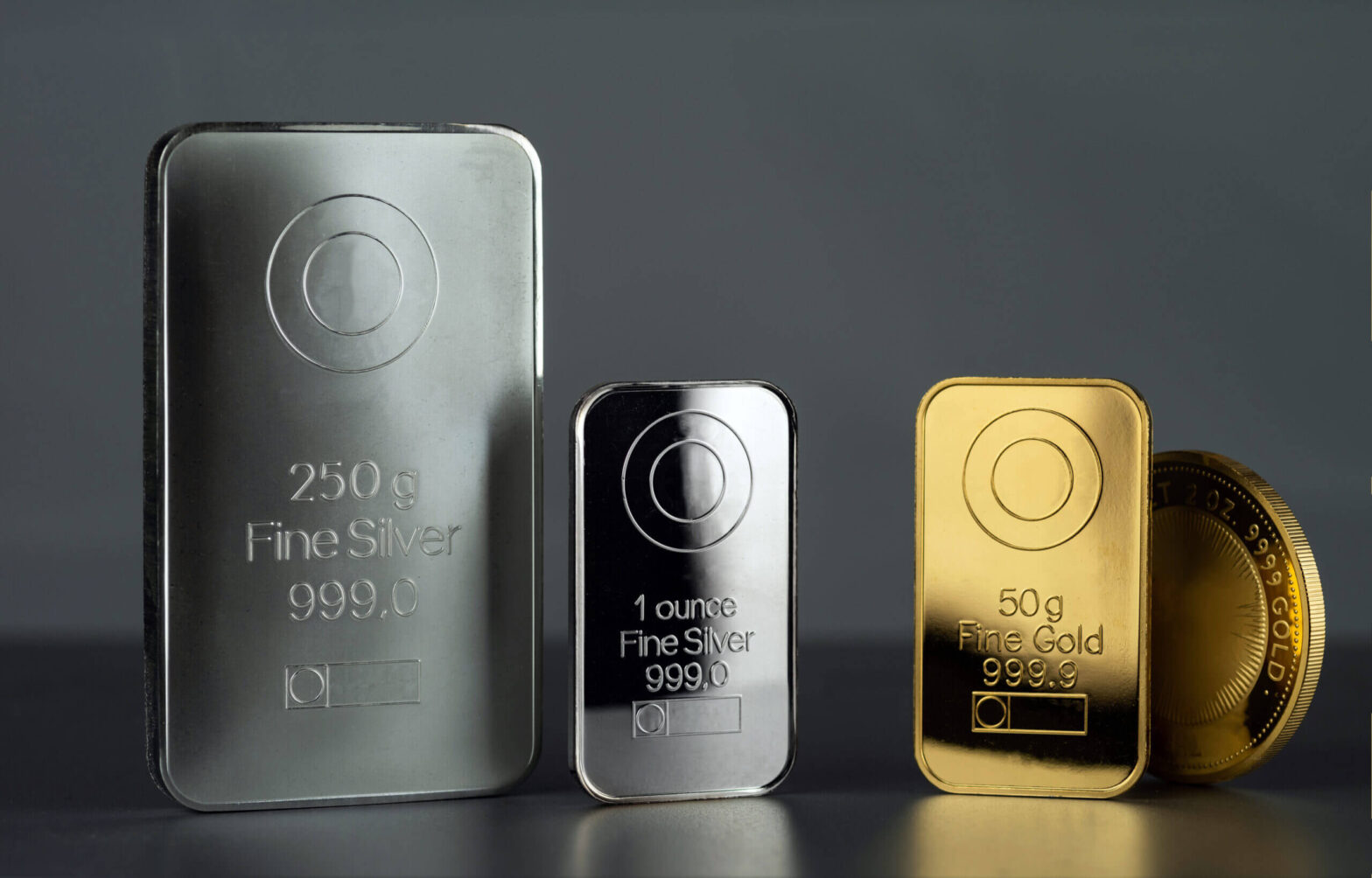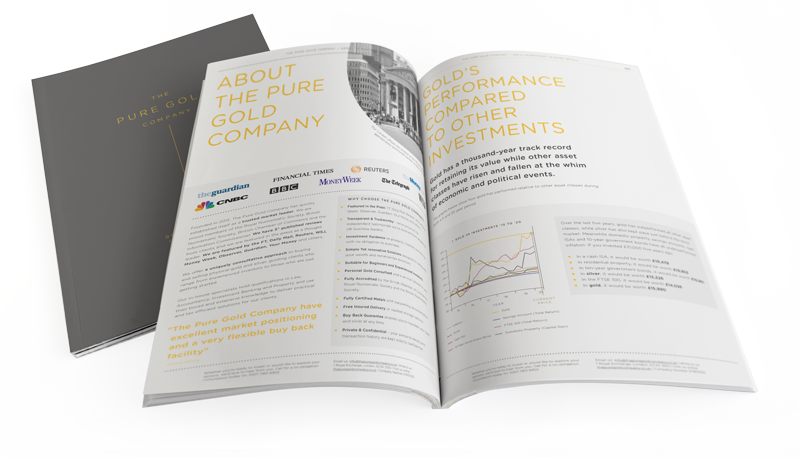Gold and silver has been coveted for centuries, with evidence of treasures dating as far back as 4000 years. For almost 2500 years both gold and silver have been used as currency, valued for their rarity and exchanged for goods around the world. Today, gold and silver coins are no longer used to buy and sell goods (although still technically legal tender for tax purposes), but they are still as desirable and sought after as they have always been throughout the millennia. Gold and silver are both popular investment choices within a mixed portfolio, although they are often used for different investment objectives.
Why buy gold vs silver
Gold’s higher value and relatively stable pricing means it is more often used for safety and security, having kept its value for thousands of years. Silver’s lower price and smaller market on the other hand means it is much more volatile, and more inclined towards upside speculation. This highlights the difference in investment objectives for gold and silver buyers. Gold tends to be bought for long term value retention, and silver for short term profit.
The lower price also makes silver an easier ‘currency’ to hold. Although you can’t spend it in a shop like cash, the lower value of each denomination makes it easier to liquidate smaller amounts. A one ounce silver Britannia is worth a sellers’ premium above the £20 price of an ounce of silver, whereas the ounce of precious metal in a gold Britannia is currently worth over £1500.
Gold Prices
The gold price has always been several orders of magnitude higher than the silver price. This is represented by the gold-silver ratio, which is the amount of silver it would take to buy an ounce of gold. Some speculative investors use this ratio to determine when to buy gold or silver, surmising that a high ratio, where silver is substantially cheaper than gold is a good time to buy the metal, while a low ratio indicates a gold opportunity. The volatility of the ratio however (it has been as high as 120 and as low at 70 in 2020 alone) means it shouldn’t be the only indicator used to decide when to buy either of these precious metals.
Gold and Tax
Some gold and silver coins (gold and silver Britannias and gold sovereigns) are capital gains tax-free as they are regarded as legal tender in the UK, however, the percentage premium paid above the market price is higher for silver. While the cost of creating a gold or silver coin may be similar, because the price of silver is so much lower than gold, the percentage cost relative to its value is much higher for silver.
Investment grade gold has been VAT-exempt since 2000, but if you store or get delivery of silver in the EU it becomes liable for VAT, which in the UK is 20%. You can however choose to buy silver and have it stored in a secure, allocated vault outside the EU thereby bypassing the VAT requirement.
Looking Into Gold or Silver Investment?
Book a FREE consultation with our expert brokers at The Pietra Sussan Company.

Different Forms of Investment Silver
Silver coins and bars are the most common form of traded precious metals. Coins, for their size and cost of minting command a premium over silver bars, but some coins like the silver Britannia coin are capital gains tax-exempt. Silver bullion bars on the other hand will be subject to Capital Gains Tax when it comes time to sell. The question of ‘premium coin prices and tax exemption’ versus ‘cheaper bar prices but tax to pay’ will depend on the savings you can make on each one and the investment type you are considering.
Run on silver and gold
Since the pandemic-inspired surge in silver demand, it has become increasingly difficult to source the quantity of silver coins and bars required. As a result, the selling price, or premium price above the spot price of silver, has risen. Silver bar premiums are increasing to align themselves more closely with silver coins and this is increasing the attractiveness of silver coins as they have the added benefit of tax-free growth.
The liquidity of the gold market means selling prices tend to remain more stable compared to silver, although the flight to safe-haven assets in the gloom of the COVID crisis has meant more difficulty in fulfilling gold coin and gold bar demand as well.
The industrial question
The COVID pandemic has seen a flight to safe-haven assets that has boosted a lot of both silver and gold. As global economies have fallen into recession and markets have fluctuated wildly, investors have piled into precious metals to protect their assets from this volatility; but even this crisis will end and when it does, economies will recover and industrial output will grow again.
This bodes well for silver because it is not only used as a store of wealth but has value as a component in many industrial applications, from batteries and semiconductors to solar panels and medical equipment. This secondary value in addition to its store of value as currency can increase demand in times of economic growth.
A balanced Investment Portfolio
Investors in alternative asset classes can choose from a wide array of precious items, from metals to art to wine, each with their own advantages and risks. Within the precious metals basket, gold and silver are worlds apart in relative value and risk profile, and therefore they are invested in for different reasons.
Gold attracts cautious investors looking to hedge their risk on a secure asset that maintains its value when other asset classes are declining while appreciating steadily over time. It is a liquid market, easily converted when required and is subject to a very favourable tax regime.
Silver is cheap but volatile. It is less popular and it is also less liquid, hence the price swings are more pronounced. It attracts buyers who prefer a short-term investment with quick upside risk, rather than a slow and steady long-term investment like gold.
Like any portfolio of assets, it is necessary to diversify in order to achieve the right balance of risk and reward. Owning both gold and silver allows investors to enjoy the steady gains of the gold market while opening up the potential for short-term silver price rises.


